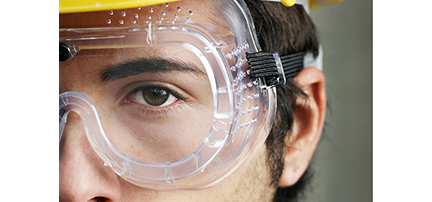
Employees can be exposed to large numbers of hazards that pose danger to their eyes and face. OSHA requires employers to ensure that employees have appropriate eye or face protection if they are exposed to eye or face hazards from flying particles, molten metal, liquid chemicals, acids or caustic liquids, chemical gases or vapors, potentially infected material or potentially harmful light radiation.
Many occupational eye injuries occur because employees are not wearing any eye protection while others result from wearing improper or poorly fitting eye protection. Employers must be sure that their employees wear appropriate eye and face protection and that the selected form of protection is appropriate to the work being performed and properly fits each employee exposed to the hazard.
Eye or face injuries examples include:
- Dust, dirt, metal or wood chips entering the eye from activities such as chipping, grinding, sawing, hammering, the use of power tools or even strong wind forces.
- Chemical splashes from corrosive substances, hot liquids, solvents or other hazardous solutions.
- Objects swinging into the eye or face, such as tree limbs, chains, tools or ropes.
- Radiant energy from welding, harmful rays from the use of lasers or other radiant light (as well as heat, glare, sparks, splash and flying particles).
Types of Eye Protection
Selecting the most suitable eye and face protection for employees should take into consideration the following elements:
- Ability to protect against specific workplace hazards.
- Should fit properly and be reasonably comfortable to wear.
- Should provide unrestricted vision and movement.
- Should be durable and cleanable.
- Should allow unrestricted functioning of any other required PPE.
The eye and face protection selected for employee use must clearly identify the manufacturer. Any new eye and face protective devices must comply with ANSI Z87.1-1989 or be at least as effective as this standard requires. Any equipment purchased before this requirement took effect on July 5, 1994, must comply with the earlier ANSI Standard (ANSI Z87.1-1968) or be shown to be equally effective.
An employer may choose to provide one pair of protective eyewear for each position rather than individual eyewear for each employee. If this is done, the employer must make sure that employees disinfect shared protective eyewear after each use. Protective eyewear with corrective lenses may only be used by the employee for whom the corrective prescription was issued and may not be shared among employees.
